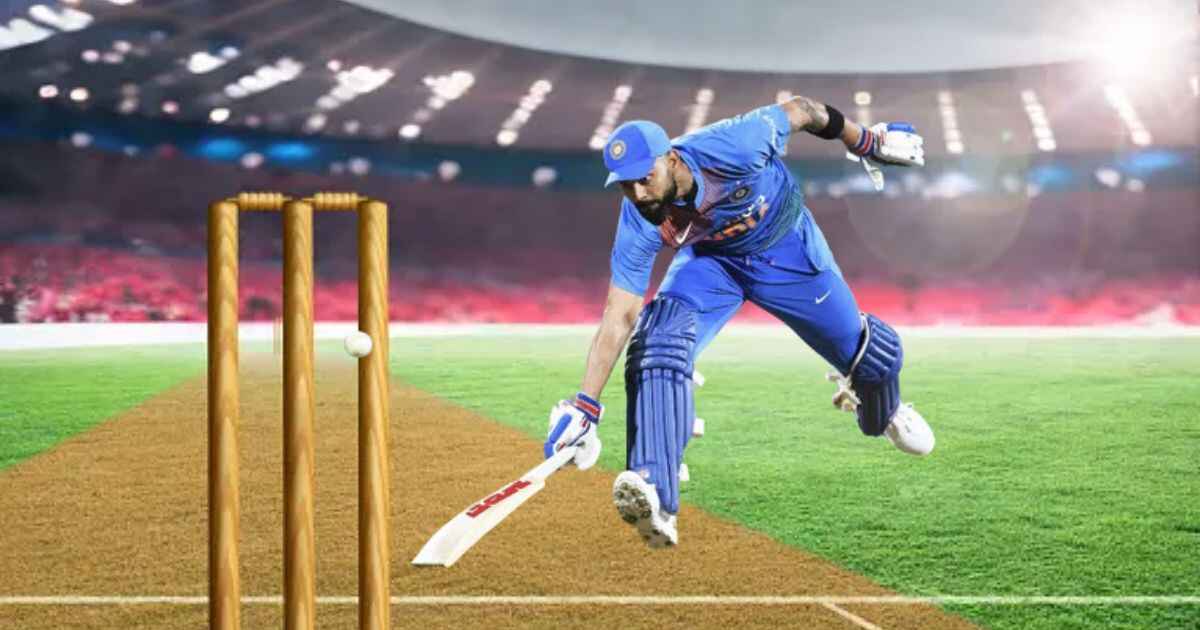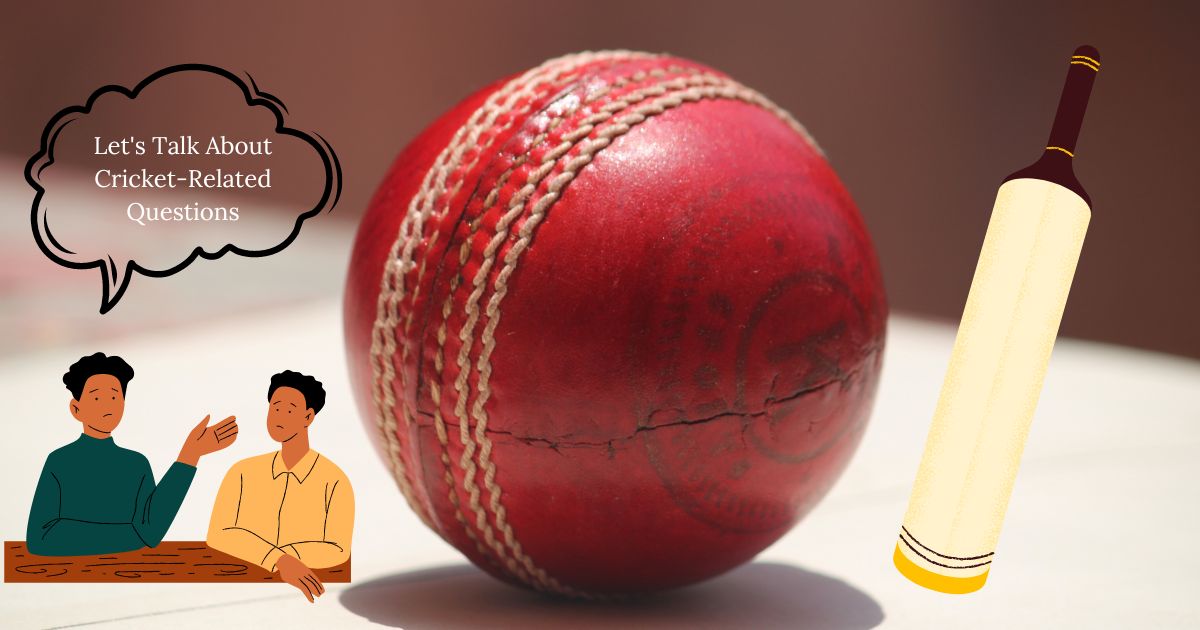Today we are talking about some amazing facts about cricket, that you do not know
As we know Cricket is one of the best and most amazing games for everyone and a lot of people are curious about cricket-related questions like who is the best player in a cricket game, who is good at a cricket match, who is the best fielder, how to become a cricketer and so more question pop up in everyone mind, so today, we are cover some questions in this article. Let’s continue this article and talk About Cricket-related questions.
Who is the Fastest Runner in Cricket?

As far as I know, the first name that comes in the world of international cricket as the fastest runner during Avi’s time is Virat Kohli and at the same time, M.S Dhoni is also no less in terms of the fastest running between the wickets. After these, Glenn Maxwell, Glenn Phillips, Ravindra Jadeja and David Warner. These are the top 6 names of the world’s fastest runners in international cricket.
Who is the Second God of Cricket?
Mr Virat Kohli is such a cricketer in today’s time whom we can call the “Second God of Cricket” due to his craziness about Cricket and extraordinary skill, longevity, fitness and influence on the game are so great that nowadays Kohli is compared with our “First God of Cricket” Sachin Tendulkar sir. Sachin Tendulkar was very crazy and interested in cricket.
Who is the Most Dangerous Batsman in the world?
In today’s time, Virat Kohli is considered to be the most dangerous batsman because Kohli is a player who is seen batting excellently in every situation and who has many records in his name also from childhood Kohli is crazy about cricket.
Here is the list of Kohli’s Records:
| TEST Records | |
|---|---|
| Test | Four Test double-hundreds in consecutive series |
| Most Wins as captain of India | 40 wins out of 68 matches |
| ODI Records | |
| Most ODI centuries ever | 50 |
| Most ODI centuries while chasing | 27 |
| Most ODI centuries in India | 22 |
| Fastest to 8,000 runs | 175 innings |
| Fastest to 9,000 runs | 194 innings |
| Fastest to 10,000 runs | 205 innings |
| Fastest to 11,000 runs | 222 innings |
| Fastest to 12,000 runs | 242 innings |
| Fastest to 13,000 runs | 267 innings |
| T20I Records | |
| Most runs in T20 internationals | 4,008 runs |
| Most Fifty plus scores in the career | 38 (including 37 fifties plus and 1 century) |
| Highest career batting average in T20I | 52.73 |
| Fastest to 3,000 runs | 81 innings |
| Fastest to 3,500 runs | 96 innings |
| Most Player of the Match awards | 15 times |
| Most Player of the Series awards | 7 times |
| IPL Records | |
| Most runs in the Indian Premier League | 7,263 runs |
| Most runs in a single edition of IPL | 973 runs in2016 |
| Most runs against Delhi Capitals | 1,030 runs |
| Most hundreds in a season | 4 |
| Most hundreds in the league | 7 |
How Much Money is needed to become a Cricketer?
Being a cricket player comes with a lot of expenses, from travel and tournament participation to training and equipment costs. Several factors, like the level of competition, availability of coaching facilities, preferred equipment quality, and travel requirements for tournaments and matches, can greatly affect the required amount of money.
Who is the Most Popular Cricketer in the world?
Sachin Tendulkar (India): Tendulkar has a significant fan base in India and throughout the world. He is recognized as one of the best batsmen in cricket history. Fans of cricket all across the world admire him for his successes, records, and humble style.
Who is known as a Run Machine in Cricket Match?
In cricket, a player who is a successful batsman who scores a lot of runs over a long period and across formats is known as a Run Machine. While there have been many Run Machines in cricket history, Virat Kohli is one of the most well-known figures nowadays.
How many Cricket Stadiums are in Australia?
There are numerous cricket stadiums across Australia, varying in size and capacity. Some of the major cricket stadiums in Australia include:
1. Melbourne Cricket Ground (MCG) – Located in Melbourne, Victoria, the MCG is one of the biggest stadiums in the world and has a seating capacity exceeding 100,000. It is considered one of Australia’s premier cricket venues.
2. Sydney Cricket Ground (SCG) – Situated in Sydney, New South Wales, the SCG is another iconic cricket stadium with a rich history. It has a seating capacity of over 48,000 and hosts both international and domestic cricket matches.
3. Adelaide Oval – Located in Adelaide, South Australia, the Adelaide Oval is renowned for its picturesque setting and historic significance. It has undergone significant redevelopment in recent years and has a seating capacity of around 55,000.
4. The Gabba (Brisbane Cricket Ground) – Situated in Brisbane, Queensland, The Gabba is a prominent cricket venue in Australia, known for its lively atmosphere during matches. It has a seating capacity of approximately 42,000.
5. Perth Stadium (Optus Stadium) – Located in Perth, Western Australia, the Perth Stadium, also known as Optus Stadium, is one of the newest cricket stadiums in Australia. It has a seating capacity of over 60,000 and has quickly become a popular venue for cricket matches.
6. Manuka Oval – Situated in Canberra, Australian Capital Territory, Manuka Oval is another notable cricket ground in Australia. While smaller in size compared to some of the larger stadiums, it has hosted several international and domestic cricket matches.
What is the Weight of a Cricket Bat?
A cricket bat’s weight can change based on some variables, including the materials used, the bat’s size, and the player’s choices. Willow wood, mainly English or Kashmir willow, is traditionally used to make cricket bats. English willow is considered to be of quality and is typically used in professional-grade bats.
Cricket bats typically weigh between 1.134 kg and 1.36 kg, with most bats ranging between 1.19 kg and 1.25 kg. However, depending on their batting style, strength, and personal choice, some players may prefer lighter or heavier bats.
Who is the Best Fielder in Cricket?
The Best fielder in cricket can be decided in a variety of ways, depending on personal choices, statistical analysis, and memorable on-field experiences. But during cricket history, there have been a few of superb fielders who are well-known for their extraordinary abilities and fitness.
Some of these notable fielders include:
1. Jonty Rhodes (South Africa): Jonty Rhodes is often considered one of the greatest fielders in cricket history. With his quickness, flexibility, and diving catches, he transformed fielding and established new benchmarks for skill during his playing career.
2. AB de Villiers (South Africa): AB de Villiers is renowned for his versatility in cricket, excelling as a batsman, wicketkeeper, and fielder. He has taken some extraordinary catches, showcased remarkable athletic ability, and displayed great timing and speed on the field.
3. Ravindra Jadeja (India): As one of the best fielders in modern cricket, Ravindra Jadeja has come to Popularity. In all game types, his quickness, flexibility, accuracy in the field, and ability to make amazing catches and cause run-outs have made him an invaluable member of the Indian cricket team.
4. Virat Kohli (India): Virat Kohli is currently named among the best fielders in the world. Due to Kohli’s fitness and running skills accuracy in the field and amazing run-out and catches. And we all know how much love Kohli has for cricket.
Which Indian Cricketer was given the title Tiger?
The person who has been referred to as Tiger in Indian cricket is Mansur Ali Khan Pataudi, often known as Tiger Pataudi. The ninth Nawab of Pataudi, Mansur Ali Khan Pataudi, was a major figure in Indian cricket in the 1960s and early 1970s. Because of his aggressive and daring style on the cricket pitch, he earned the name Tiger.
How Man of the Match is decided in Cricket?
- Batting Performance: A player who scores a significant number of runs, especially under pressure situations or at a high strike rate, may be considered for the award.
- Bowling Performance: A bowler who takes crucial wickets, restricts the opposition’s scoring rate, or delivers a match-winning spell may be considered for the award.
- All-Round Performance: A player who contributes significantly with both bat and ball may be recognized for their all-round performance.
- Fielding Contribution: Exceptional fielding efforts, such as spectacular catches, run-outs, or fielding saves that have a decisive impact on the match, may also be taken into account.
- Impact on the Result: The player’s overall impact on the match, including their contribution to their team’s victory or their resilience in a losing cause, is a crucial factor in determining the Man of the Match.

